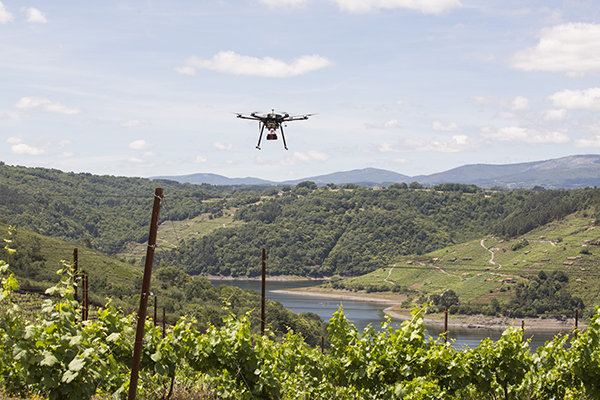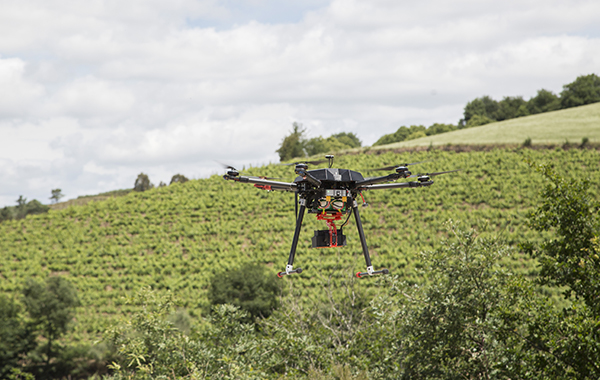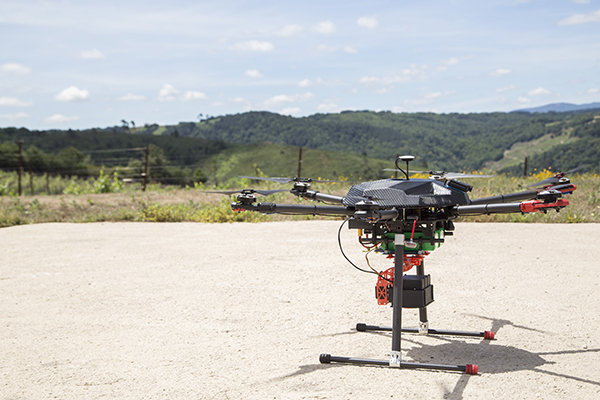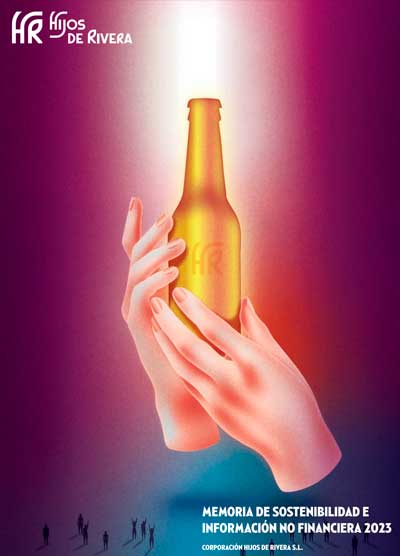The project comes to life with a new multispectral system aboard unmanned aircraft that allows to zone vineyards with precision. This information helps when taking important decisions, optimising the growing and harvesting process, both in terms of quality and efficiency.

The vineyards of the Ribeira Sacra witnessed the first flight of the ECOVINE project drone, a project that is promoted by our winery, Ponte da Boga, with the support of the University of Santiago de Compostela and the CSIC, the collaboration of the Lar de Ricobao winery, and the technology companies Elmantec and Teican Medioambiental.
The aim of this innovative initiative is to facilitate the control and comprehensive management of the vineyards through the implementation of complex remote monitoring and control systems based on visualization and data analysis platforms.
To do so, its system is based on the study of the vineyards by analysing the light spectrum reflected on them, through a SAM camera with a number of lenses to which different filters are applied. The images taken are recorded on a detachable solid-state drive, which means a minimum of seven simultaneous images of different light spectrums of the vineyard.

This drone allows, together with the data supplied by the soil sensors, to divide the vineyards into sections with precision and identify the physiological and vegetative state of the soil.
Hence, this innovative information gathering system carries out an exhaustive analysis of the whole surface of the vineyard – its variability, the water content, the development of the plants, and the quality of the grape –resulting in a chromatic map that, once treated with specific software, offers detailed global data on a map of the plot. With this map, predictions can be made about the appearance of diseases, or the best moment for harvesting that would not be possible to predict with simple observation of images with the human eye.
All this is very useful information that simplifies the taking of important decisions such as the best moment for harvesting, the treatments to be applied to each part of the vineyard, and the need to water based on energy efficiency models, hence optimising the harvesting and cultivation processes, both in terms of quality and efficiency.



